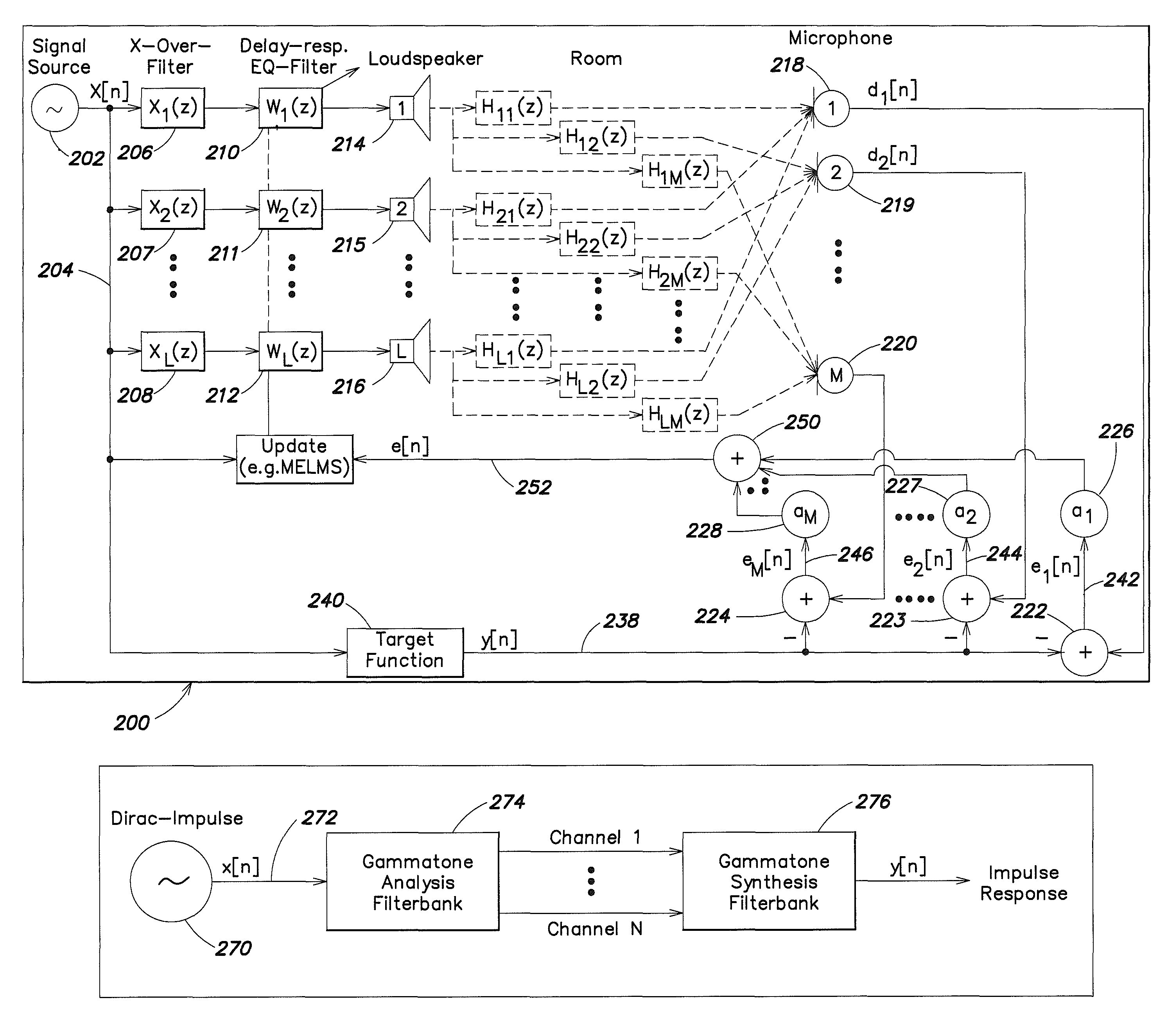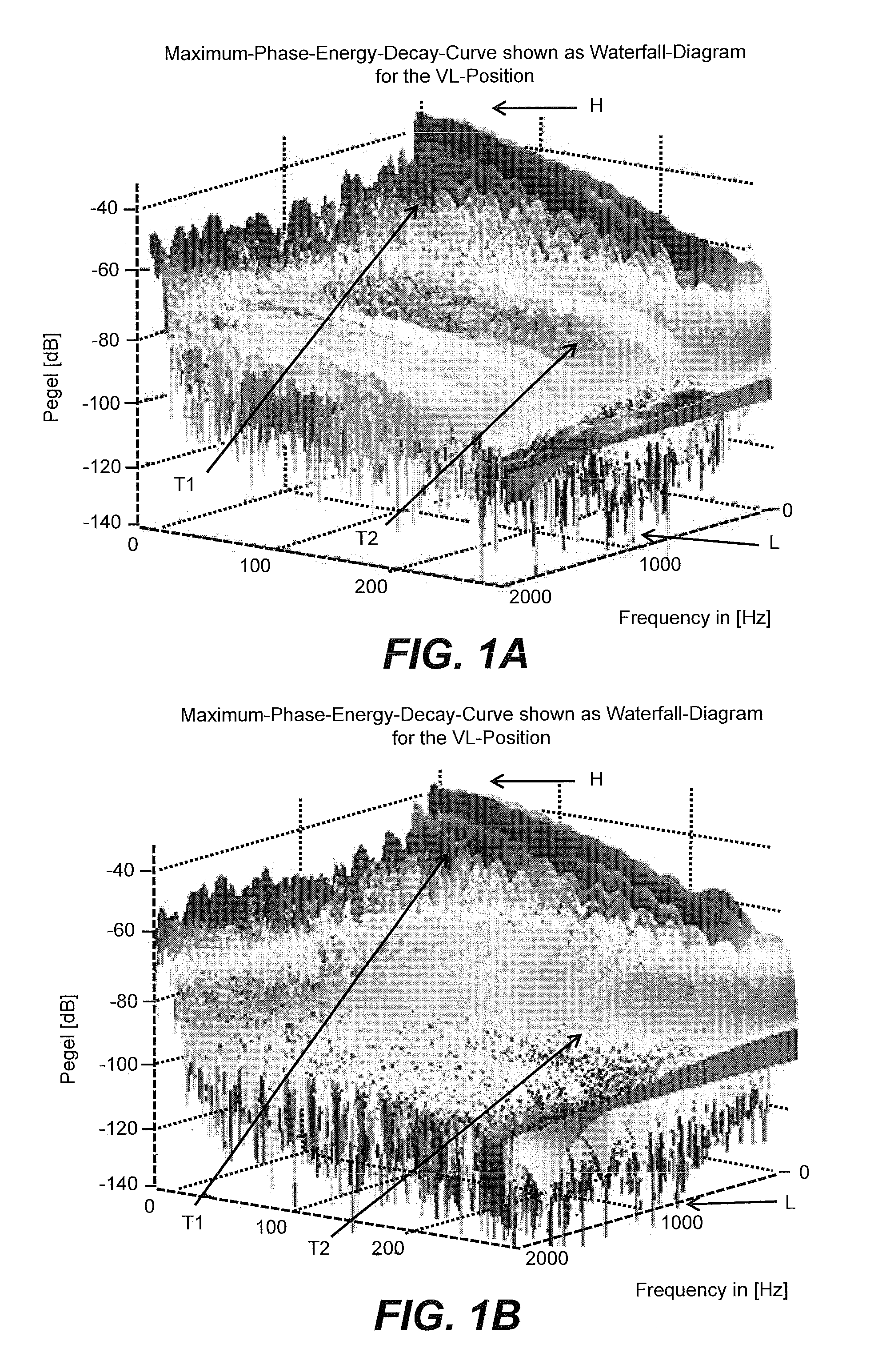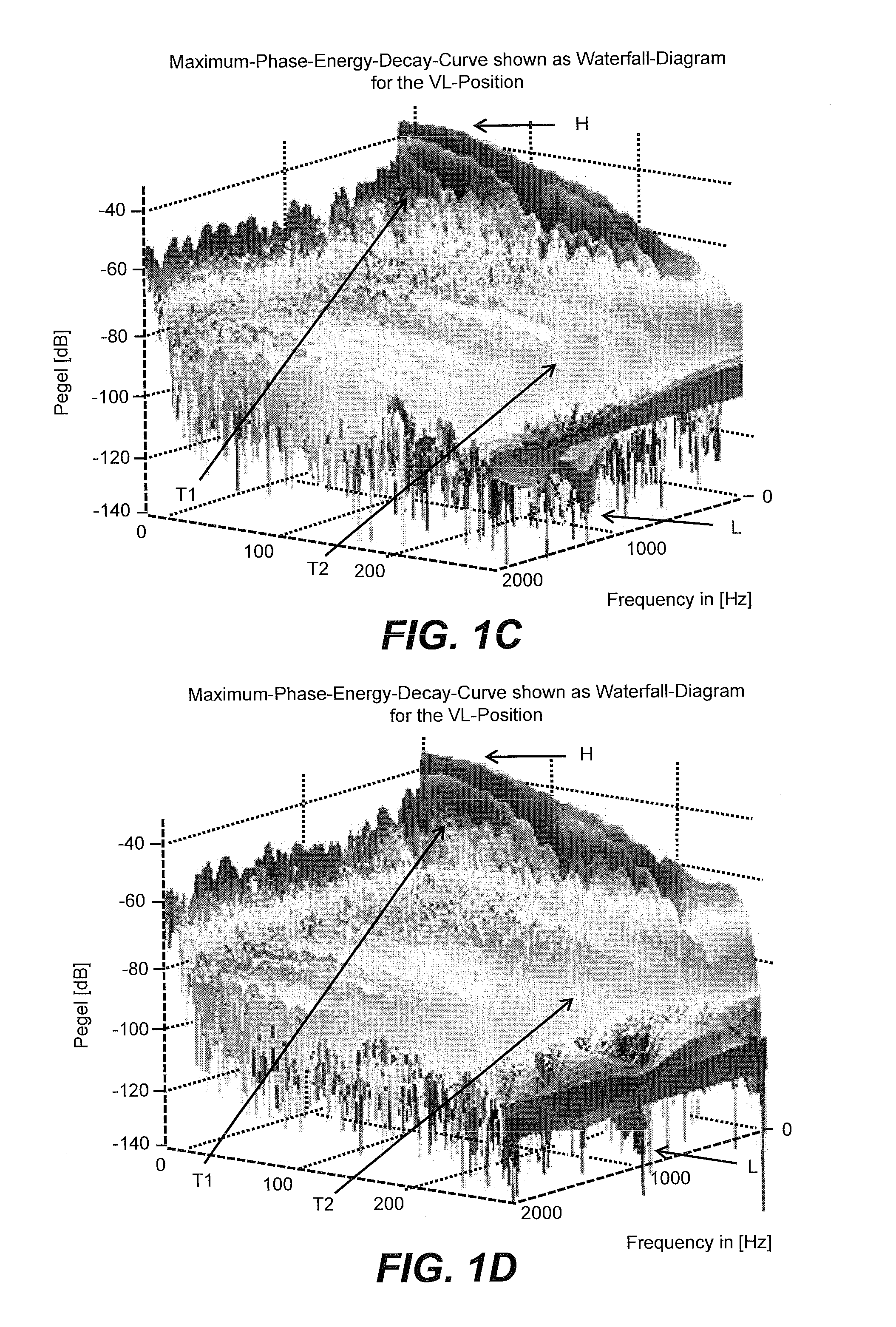Sound tuning method
a technology of sound tuning and sound, applied in the field of sound tuning, can solve the problems of high degree of experience, time-consuming, and system complexity, and achieve the effect of reducing the difficulty of tuning, and improving the accuracy of tuning
- Summary
- Abstract
- Description
- Claims
- Application Information
AI Technical Summary
Benefits of technology
Problems solved by technology
Method used
Image
Examples
Embodiment Construction
[0037]In the present case, investigations have been conducted in order to determine first how acoustic parameters are changed when tuning is performed by trained acousticians or sound engineers. As a test environment, a premium class limousine has been selected. The sound system of this vehicle comprises a total of 10 channels (FrontLeft (LF), FrontRight (FR), Center (C), SideLeft (SL), SideRight (SR), RearLeft (RL), RearRight (RR), SubwooferLeft (SubL), SubwooferRight (SubR), a separate subwoofer (Sub)) located in the trunk and an amplifier for each channel. The tuning is performed using both phase tuning by changing the parameters of delay lines, all-pass filters and cross-over filters, and frequency tuning by changing the parameters of biquadratic, bilinear filters and cross-over filters. The separate subwoofer placed in the trunk of the vehicle is an active loudspeaker operated with a low-pass filter having a 100 Hz cut-off frequency, 90° phase shift, and volume set to the cente...
PUM
 Login to View More
Login to View More Abstract
Description
Claims
Application Information
 Login to View More
Login to View More - R&D
- Intellectual Property
- Life Sciences
- Materials
- Tech Scout
- Unparalleled Data Quality
- Higher Quality Content
- 60% Fewer Hallucinations
Browse by: Latest US Patents, China's latest patents, Technical Efficacy Thesaurus, Application Domain, Technology Topic, Popular Technical Reports.
© 2025 PatSnap. All rights reserved.Legal|Privacy policy|Modern Slavery Act Transparency Statement|Sitemap|About US| Contact US: help@patsnap.com



